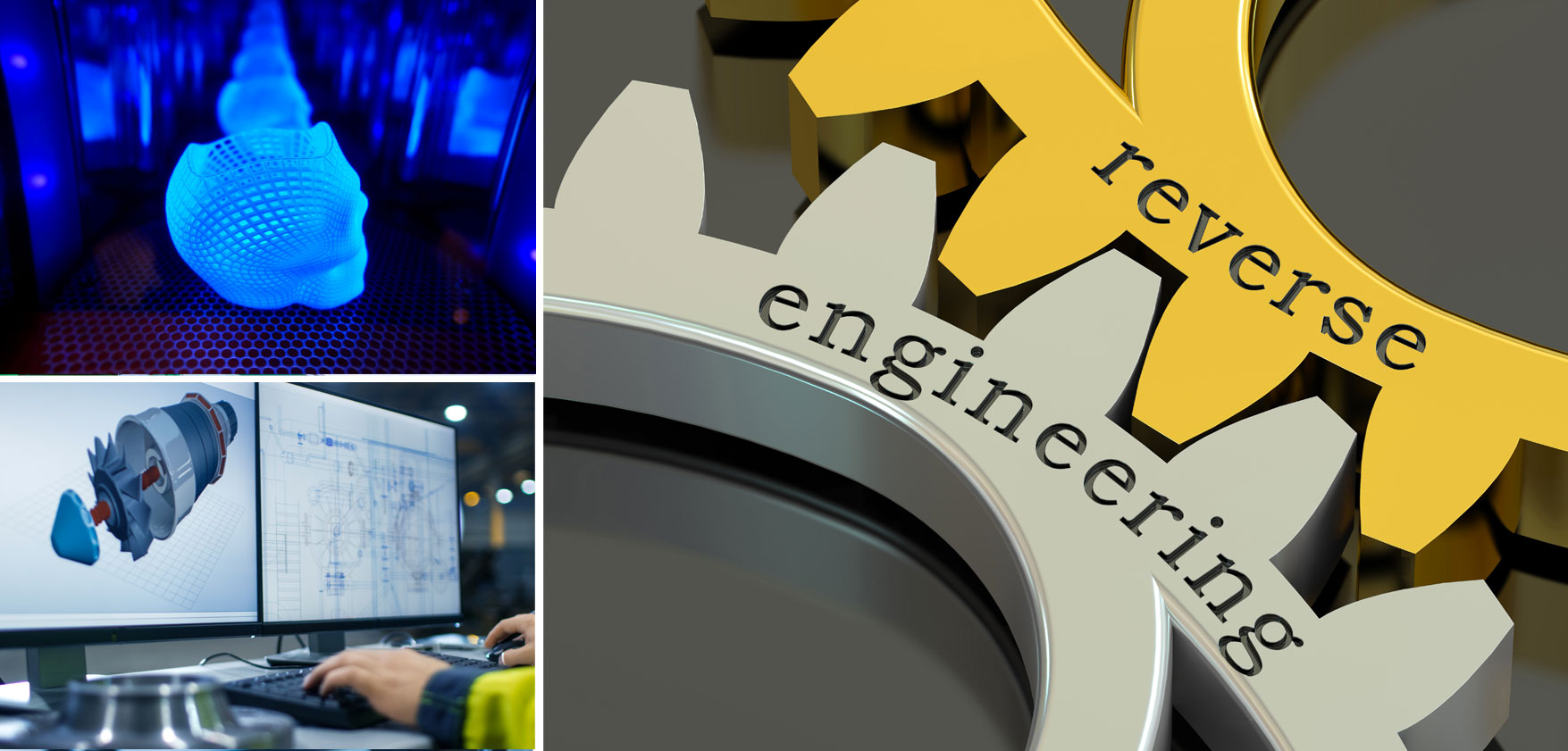
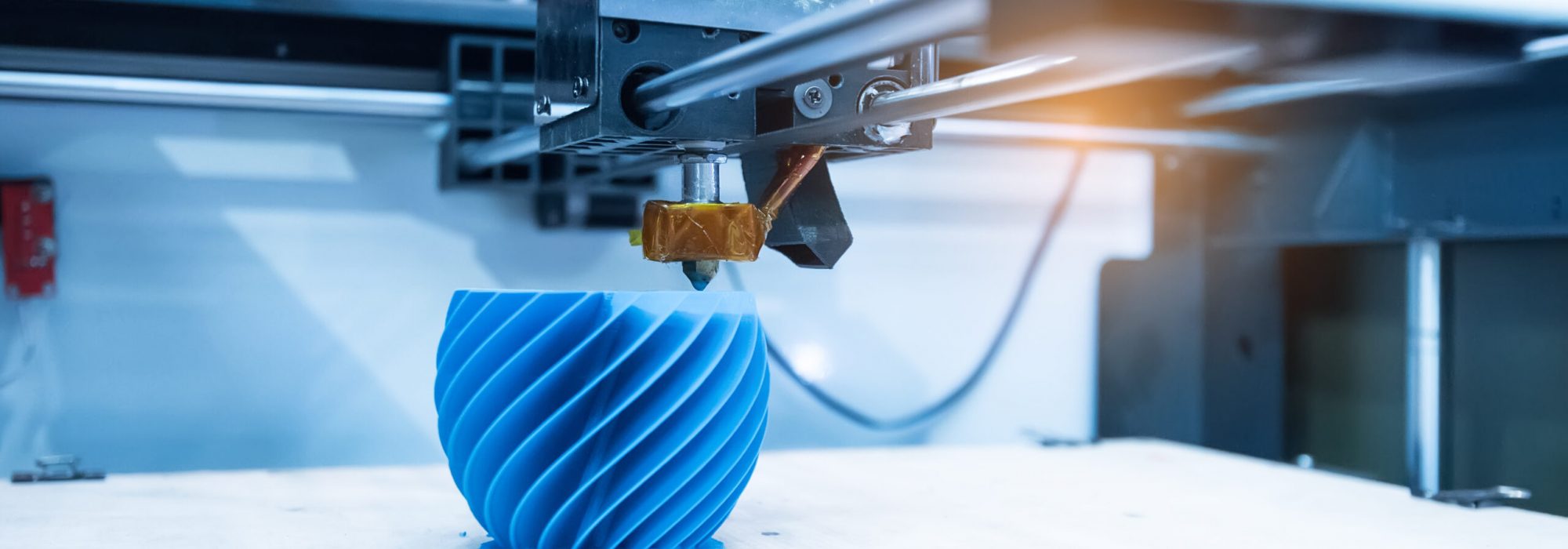
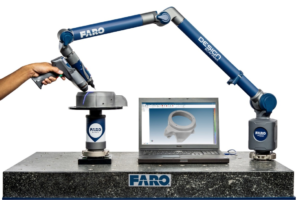 CAM2® 8-Axis Quantum Arm is a complete metrology solution, with and without contact, which allows operators to significantly speed up and simplify measurement and scanning operations. It is the ideal tool for inspection and quality control, and is the perfect solution for comparison with CAD data, rapid prototyping, reverse engineering and 3D modeling of free-form surfaces. The scanning probe uses blue laser technology, which has a shorter wavelength than red or green lasers and provides better scanning results with higher fidelity. This means that even the finest details can be captured, as well as the ability to scan dark and shiny surfaces is significantly improved.
CAM2® 8-Axis Quantum Arm is a complete metrology solution, with and without contact, which allows operators to significantly speed up and simplify measurement and scanning operations. It is the ideal tool for inspection and quality control, and is the perfect solution for comparison with CAD data, rapid prototyping, reverse engineering and 3D modeling of free-form surfaces. The scanning probe uses blue laser technology, which has a shorter wavelength than red or green lasers and provides better scanning results with higher fidelity. This means that even the finest details can be captured, as well as the ability to scan dark and shiny surfaces is significantly improved.
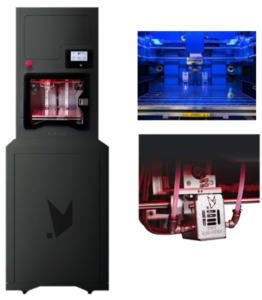 The Roboze ONE +400 extreme is a 3D printer based on the FDM (Fused Deposition Modeling) printing technique, in which the prototype is generated by melting and extruding a polymeric material that is in the form of a filament and that a printing nozzle deposits layer by layer in the print area.
The Roboze ONE +400 extreme is a 3D printer based on the FDM (Fused Deposition Modeling) printing technique, in which the prototype is generated by melting and extruding a polymeric material that is in the form of a filament and that a printing nozzle deposits layer by layer in the print area.
Materials:
Roboze One + 400 Xtreme processes a large variety of engineering polymers and super polymers. From aesthetic materials such as ULTRA-PLA and ABS, passing through flexible materials such as FLEX-TPU, up to super polymers such as PEEK and Carbon PEEK. Thanks to the extreme versatility and performance of super polymers, functional prototypes can be created for extremely different applications, accelerating the development and testing phase, reducing time and costs.
Other usable materials include: CARBON PA, CARBON PP, GLASS PA, PP, NYLON.
Dimensions and temperature of the printing bed: The Roboze One Xtreme printing bed, with a volume of 300 x 250 x 200 mm (xyz), reaches temperatures up to 150 °C (302 °F) which, together with vacuum technology, guarantees stability and perfect adhesion of the printed components throughout the process.
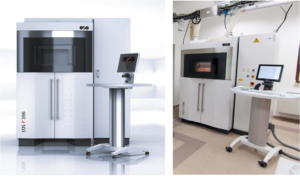 The EOS P396 is an industrial 3D printer, manufactured by the German company EOS, based on laser sintering printing technology (SLS), which is a 3D printing technique that uses a fiber laser to melt the raw material that is presented in the form of dust. Layer by layer 3D objects with excellent mechanical properties and high dimensional accuracy are built. The system is open, and allows you to fine-tune printing processes for different polymeric-based materials always reduced to powder.
The EOS P396 is an industrial 3D printer, manufactured by the German company EOS, based on laser sintering printing technology (SLS), which is a 3D printing technique that uses a fiber laser to melt the raw material that is presented in the form of dust. Layer by layer 3D objects with excellent mechanical properties and high dimensional accuracy are built. The system is open, and allows you to fine-tune printing processes for different polymeric-based materials always reduced to powder.
Materials:
the EOS P396 printer allows a wide choice of polyamide-based materials, i.e.: PA 1101, PA 1102 black, PA 2200, PA 2201, PA 2210 FR, PrimePart FR (PA 2241 FR), PA 3200 GF, Alumide, EOS TPU 1301, PP 1101, PrimeCast 101, ALM FR-106, ALM HP 11-30, ALM PA 640 GSL

The Stratasys J750 Digital Anatomy ™ is among the first 3D printing systems designed for advanced surgical training and medical device development. For the first time, anatomical models can be made with unparalleled accuracy, realism, and functionality. Specifically, the Stratasys J750 Digital Anatomy™ is an advanced 3D printer designed specifically for the medical industry, capable of creating highly realistic anatomical models using PolyJet technology. This technology makes it possible to reproduce not only the visual appearance, but also the tactile and biomechanical properties of human tissue, offering an unprecedented level of realism. One of the distinguishing features of this printer is the ability to print using a variety of photopolymer materials, enabling models with a full range of colors, textures and transparency levels. Digital Anatomy™ materials, developed specifically for medical applications, allow the texture and strength of bones, soft tissues and ligaments to be replicated with extreme accuracy. Among them, TissueMatrix™ simulates soft tissue with different densities, BoneMatrix™ reproduces the structure of bones with realistic mechanical properties, and GelMatrix™ enables the printing of complex vascular structures.
With a resolution of up to 14 microns, the J750 Digital Anatomy™, with a build area of 490 x 390 x 200 mm, offers an extraordinary level of detail, ideal for creating sophisticated internal structures. Its applications range from medical training, with the creation of realistic surgical models for training and simulation, to pre-operative planning, where customized replicas of organs and tissues can be printed from medical scans such as MRI and CT scans. In addition, it is used in medical device research and development, enabling advanced testing on highly lifelike models.

The printer is compatible with GrabCAD Print™ software, which simplifies file management and preparation for printing, while also supporting DICOM formats to directly transform medical images into three-dimensional models. This integration makes the Stratasys J750 Digital Anatomy™ an essential tool for the medical world, offering an innovative alternative to traditional anatomical models and enhancing the possibilities for learning, research and surgical planning. The J750 Digital Anatomy solution reproduces the look and feel of native tissue and provides true tactile feedback during suturing, reaming, cutting, insertion, and deployment of medical devices. With unique digital capabilities, 3D printed medical models can be created with an incredible range of voxel-level microstructures that not only look, but feel and function like real human tissue. All this is a single printing operation with few or no finishing steps such as painting, sanding, or assembly.

The Datron M10Pro is a high-precision CNC machining center designed for applications requiring fast, accurate and reliable machining . With its rigid construction and vibration-optimized design, this machine delivers excellent results in terms of surface quality and dimensional tolerances. Equipped with a high-speed spindle, the M10Pro is capable of machining a wide range of materials, including aluminum, plastics, and composite materials. Its advanced technology enables high feed rates without compromising accuracy, making it ideal for the production of high-quality components in aerospace, electronics, automotive, and micromechanics. Integration with an intuitive control system and simplified user interface allows operators to run the machine efficiently, optimizing machining times. The Datron M10 Pro is a powerful and highly accurate machine that offers rigidity, thermal stability and accuracy. It enables high-speed machining with a 3 kW, 40,000-rpm HSK spindle. It represents the only German-designed machining system with linear scales, thermally balanced construction, and a 2:1 footprint to machining area ratio for high-tolerance, demanding work. The integrated linear measuring system with 40 nm resolution ensures continuous accuracy, making the M10 Pro ideal for different batch sizes, small numbers, large numbers, and high-tech materials. Here are some features:

One of the main strengths of the Datron M10Pro is its ability to work with advanced milling strategies that achieve smooth surfaces and extremely precise details. Its compatibility with advanced CAD/CAM software ensures seamless integration into modern digital workflows, facilitating programming and machining management. Reliable, fast and versatile, the Datron M10Pro is an ideal solution for those in need of a high-precision CNC milling machine that combines excellent performance with ease of use.

The UltimakerS3 is a professional dual-extrusion 3D printer designed to offer high precision, reliability and ease of use in a compact format. Ideal for advanced prototyping and production of functional components, it integrates advanced printing technologies and an intelligent material management system, making it perfect for engineers, designers and companies in need of high-quality 3D printing solutions.
The maximum print volume is 230 × 190 × 200 mm, enabling the creation of medium-sized objects with high surface quality and precise details. The heated print bed reaches a maximum temperature of 140°C, improving material adhesion and reducing the risk of deformation during printing.
Thanks to dual extrusion, the Ultimaker S3 can print by combining technical and support materials, including PLA, ABS, Nylon, CPE, CPE+, PC, TPU 95A, PP, PVA and Breakaway. Its interchangeable nozzles of 0.25 mm, 0.4 mm, 0.6 mm and 0.8 mm offer flexibility in print resolution, with layer thicknesses ranging from 20 to 600 microns for extremely fine details or faster prints.

Positioning accuracy is 6.9 µm in the X and Y axis, while in the Z axis it reaches 2.5 µm, ensuring high print quality and faithful reproduction of digital patterns. The automatic flatbed leveling system uses a capacitive probe to precisely calibrate the offset between the flatbed and nozzles, ensuring reliable results on every print.
The 4.7-inch touchscreen interface simplifies printer management, while advanced connectivity, including Wi-Fi, Ethernet and USB, enables remote printing and process monitoring. Compatibility with Ultimaker Cura software, which is optimized for the Ultimaker ecosystem, facilitates model preparation and integration into digital workflows.
With its enclosed design and air filtration system, the Ultimaker S3 provides a safe and controlled printing environment, reducing particle dispersion and improving surrounding air quality. With its versatility, precision and reliability, this printer is an ideal solution for professionals and companies in need of high-quality additive manufacturing.

The INTAMSYS FUNMAT HT is a 3D printer designed for high-temperature printing, ideal for the production of components made of PEEK, PEI (ULTEM), PPSU and other advanced technical materials. Thanks to its technical features, this machine guarantees precision, mechanical strength and dimensional stability, making it perfect for applications in the aerospace, automotive, medical and manufacturing sectors. Equipped with a printing chamber heated up to 90°C, the FUNMAT HT ensures optimal thermal control throughout the printing process, reducing the risk of deformation and improving adhesion between layers. The print bed reaches 160°C, allowing work with high-temperature materials without detachment or deformation problems. Theextruder, capable of operating up to 450°C, allows high-performance polymers to be printed with excellent surface quality and precise details. The printer offers a print volume of 260 × 260 × 260 mm, enabling the production of medium-sized parts with high quality and repeatability. Print resolution varies between 50 and 300 microns, ensuring excellent detail definition and smooth surfaces.

The high-precision motion system ensures positioning accuracy of 12.5 µm in the X and Y axes and 1.25 µm in the Z axis, improving the stability of prints. For ease of use, the FUNMAT HT features automatic printbed leveling, an intuitive 7-inch touchscreen interface, and connectivity via USB and Ethernet, offering advanced control of the printing process. Compatibility with professional slicing software such as Intamsuite, Simplify3D and Cura ensures flexible management of printing parameters and optimal model preparation. Due to its robustness, ability to print ultra-performing materials, and advanced technological solutions, the INTAMSYS FUNMAT HT is an excellent choice for companies and research centers that need a reliable, high-performance 3D printer for the production of functional prototypes and advanced industrial components.

The Artec Leo is a high-end portable 3D scanner designed to capture three-dimensional models with high accuracy and speed, without the need for a computer connection. With its ergonomic design and advanced technology, it is ideal for applications in the industrial, medical, aerospace, automotive, and research sectors.
The scanning area is 244 × 142 mm at a distance of 0.5 m, with the ability to acquire objects ranging in size from small components to large parts while maintaining precise details. 3D resolution is up to 0.2 mm, while volumetric accuracy is 0.1 mm + 0.3 mm/m, ensuring high-quality results for metrology and reverse engineering.
The Artec Leo is equipped with a VCSEL (vertical cavity surface-emitting laser) projection system, which improves acquisition capability even on difficult surfaces, such as reflective or dark materials. The depth range varies from 35 cm to 1.2 m, allowing large surfaces to be acquired quickly without losing detail.
Acquisition takes place at a rate of 35 million points per second, with a frame rate of up to 80 fps, making the scanning process smooth and fast. The system also features automatic markerless tracking, reducing the need for object preparation and improving user convenience.

The device is completely wireless, thanks to a built-in battery that provides about 3.5 hours of battery life. It features a 5.5-inch HD touchscreen display, allowing the user to view real-time scanning without the need for an external computer. The internal memory is 256 GB, expandable via microSD card, allowing captured data to be saved directly.
For connectivity, it supports Wi-Fi, Ethernet and USB-C, facilitating data transfer to PCs or servers. The compatible processing software is Artec Studio, which offers advanced tools for post-processing and integration with CAD and reverse engineering software.
With its high accuracy, ease of use and mobility, theArtec Leo is a state-of-the-art 3D scanning solution suitable for professionals who need a reliable device for digitizing objects with precise details and superior quality.